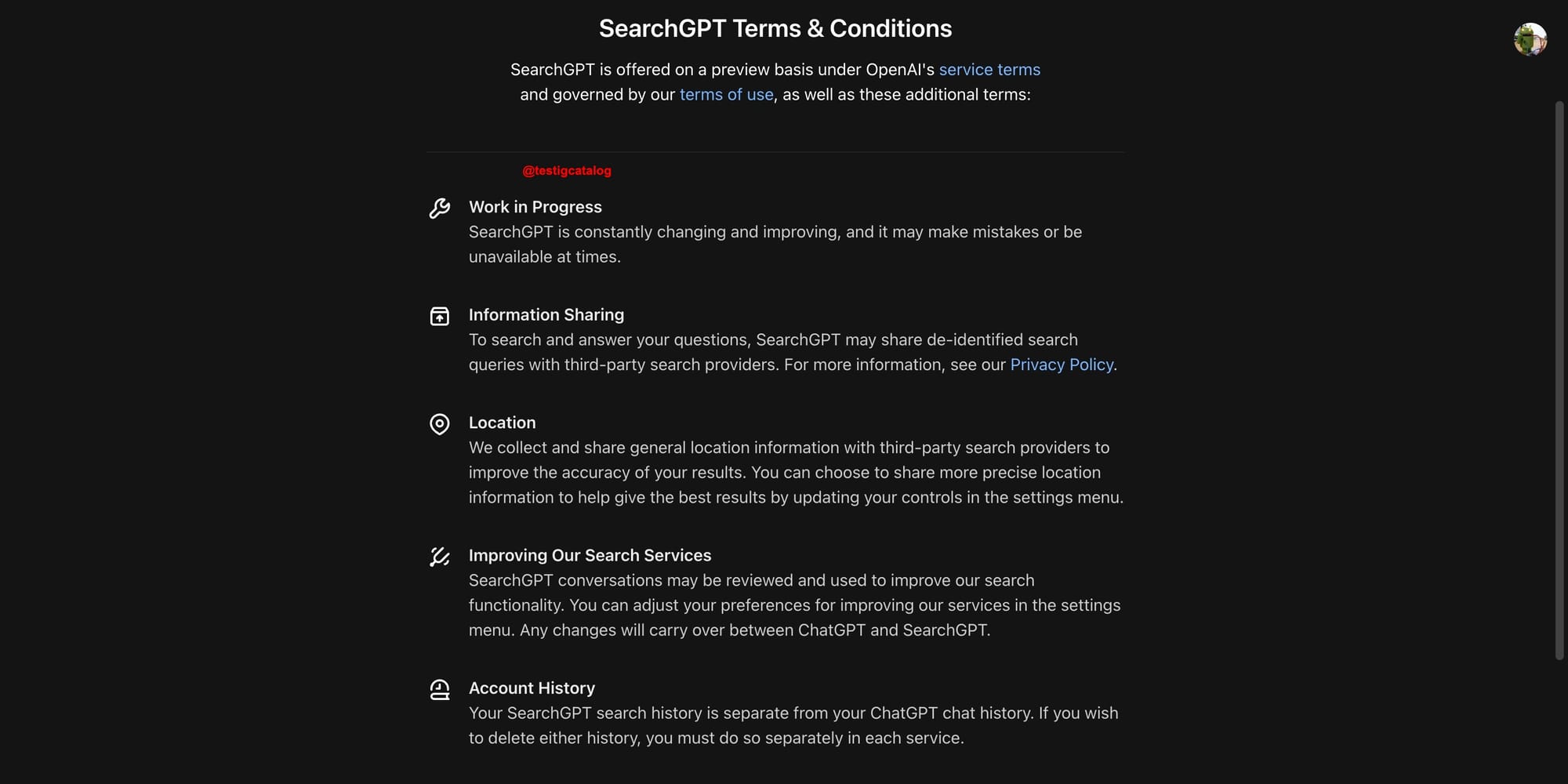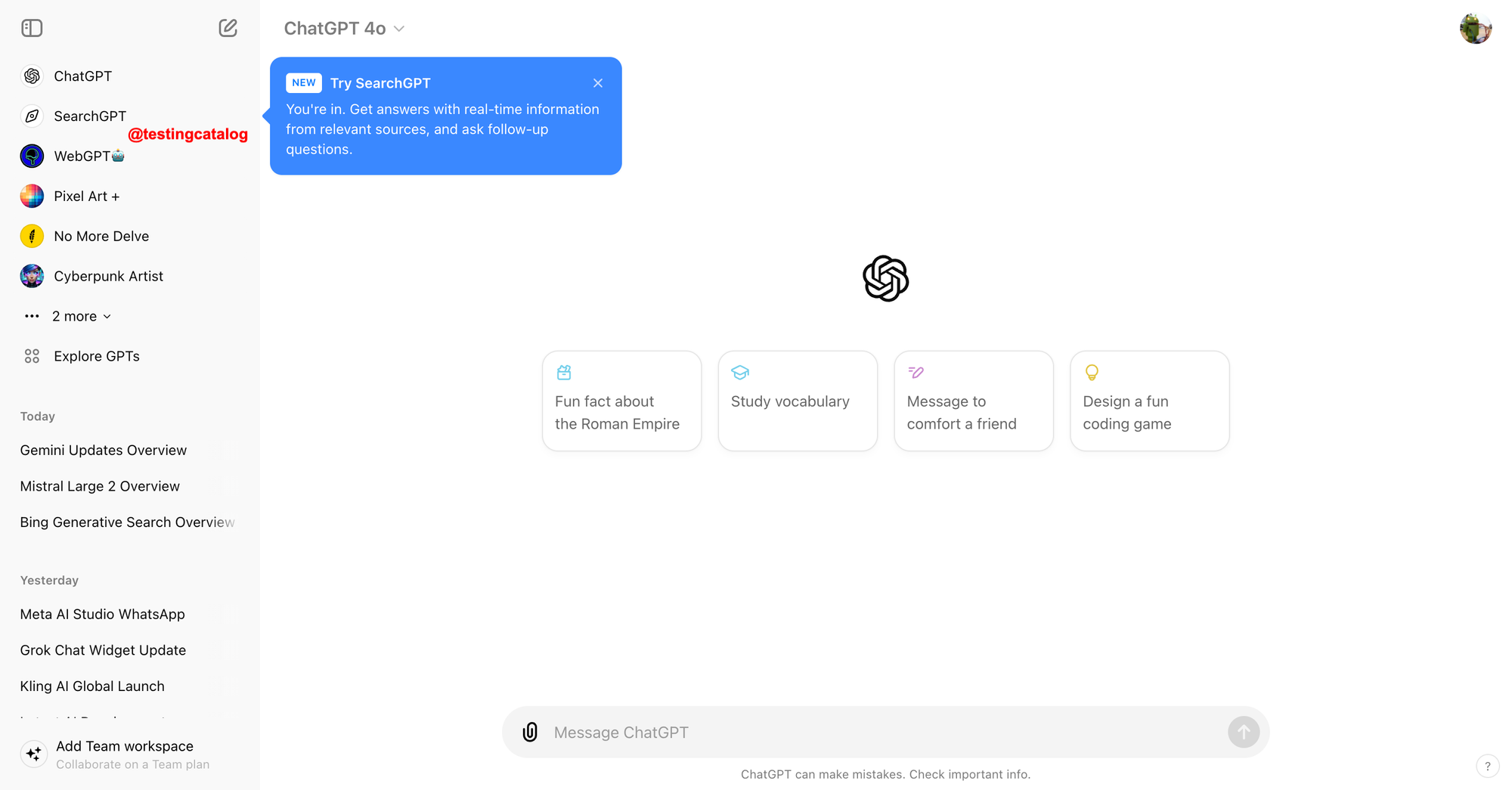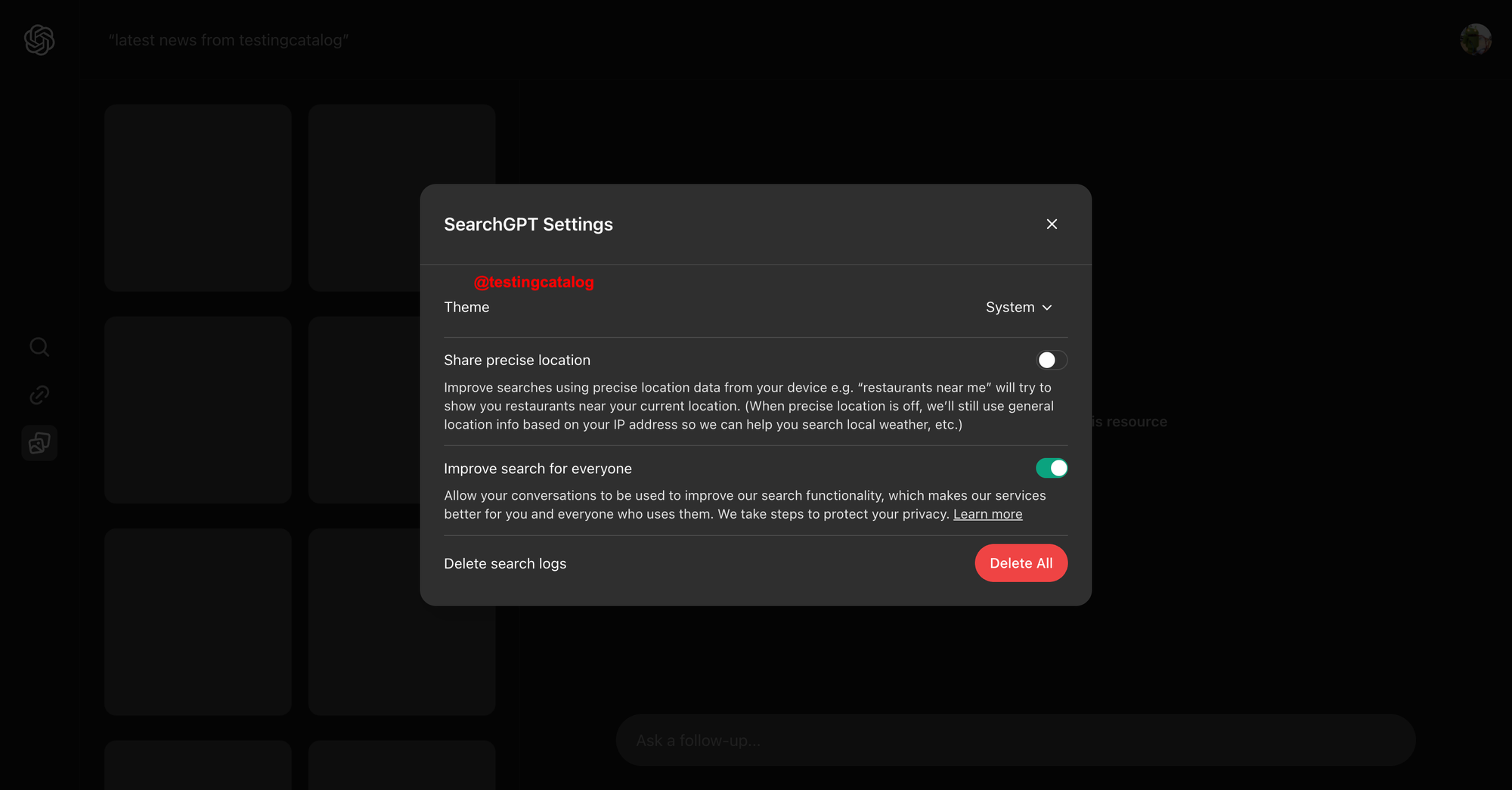SearchGPT is a new AI-powered search feature prototype developed by OpenAI. It aims to combine the strengths of OpenAI's AI models with real-time information from the web to provide fast, timely, and relevant answers to user queries.
Last year, rumors began circulating that OpenAI was working on its own search product, as reported by The Information. Early prototypes were leaked in April, discovered by reverse engineers. Shortly after, a testing catalog accessed an early preview of the UI prototype, which is currently behind a waitlist. When users open the search page, they can sign up for this waitlist.
Initially, it appears this feature will be available primarily in the United States, as the onboarding screen only appears when accessing the hidden search UI through a US VPN. Otherwise, it remains hidden.

In the original ChatGPT product, users will notice a new search button on the sidebar, with a tooltip inviting them to try it out. This button leads to a standalone search page, which is currently quite simple. It features an editable text field, which you can also access via a shortcut. Auto-suggestions appear as you type.

It was confirmed that the current release is only a testing prototype. Eventually, this feature will be integrated into the core ChatGPT product. After typing a query, users are navigated to the results page.

At TestingCatalog, we don't have access to the responses because the model itself is still protected. However, users can switch between related images or related sources on the sidebar. There’s also a separate settings option where users can toggle location access, decide if they want to contribute to data training, or delete their data.

When this feature becomes available, users will see a user agreement before accessing the search, which they must accept. This agreement informs users that their search queries might be reviewed by people. Additionally, it was revealed that SearchGPT will excel at providing real-time information, unlike the generic Bing search capability currently available on ChatGPT.

It was also confirmed that SearchGPT will have its own crawler, similar to the one used by Perplexity. Although SearchGPT will still rely on the Bing index, it will also use its own crawler to fetch real-time data on the fly, overcoming Bing’s slower index.

Lastly, SearchGPT will be powered by a model with proper multi-modal capabilities. While it’s unclear how it will handle images, it’s possible that it will automatically understand image content. This assumption is based on the publicly available source code.
It seems that SearchGPT may be powered by a proper image multimodality 👀
— TestingCatalog News 🗞 (@testingcatalog) July 26, 2024
+ In case you were in doubt - it is still using Bing search index pic.twitter.com/NHazTElGew
Key aspects of the feature include:
- Conversational interface: Users can ask follow-up questions, building context with each query.
- Direct answers: The system provides quick, direct responses to questions using up-to-date web information.
- Clear sourcing: Answers include clear links to relevant sources, with in-line, named attribution.
- Publisher partnerships: OpenAI is working with publishers to ensure proper attribution and allow them to manage how they appear in SearchGPT results.
We’re testing SearchGPT, a temporary prototype of new AI search features that give you fast and timely answers with clear and relevant sources.
— OpenAI (@OpenAI) July 25, 2024
We’re launching with a small group of users for feedback and plan to integrate the experience into ChatGPT. https://t.co/dRRnxXVlGh pic.twitter.com/iQpADXmllH
How it works:
- Users can ask questions in natural language.
- The AI combines its knowledge with real-time web information to generate responses.
- Answers are presented with clear source attribution and links.
- Users can engage in follow-up questions for a more in-depth exploration of topics.
The Company Behind It: OpenAI
OpenAI, known for developing advanced AI models like GPT-4o and GPT-4o-mini, is expanding its focus to include search capabilities. This move represents a significant step in applying their AI technology to practical, user-facing applications.






